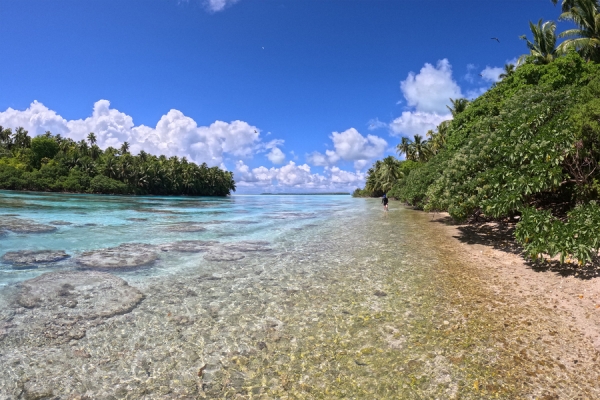Volcanic islands, such as the islands of Hawaii and the Caribbean, are surrounded by coral reefs that encircle an island in a labyrinthine, living ring.
Volcanic islands, such as the islands of Hawaii and the Caribbean, are surrounded by coral reefs that encircle an island in a labyrinthine, living ring. A coral reef is punctured at points by reef passes — wide channels that cut through the coral and serve as conduits for ocean water and nutrients to filter in and out. These watery passageways provide circulation throughout a reef, helping to maintain the health of corals by flushing out freshwater and transporting key nutrients.
Now, MIT scientists have found that reef passes are shaped by island rivers. In a study appearing today in the journal Geophysical Research Letters, the team shows that the locations of reef passes along coral reefs line up with where rivers funnel out from an island’s coast.
Their findings provide the first quantitative evidence of rivers forming reef passes. Scientists and explorers had speculated that this may be the case: Where a river on a volcanic island meets the coast, the freshwater and sediment it carries flows toward the reef, where a strong enough flow can tunnel into the surrounding coral. This idea has been proposed from time to time but never quantitatively tested, until now.
Read More: Massachusetts Institute of Technology
Photo Credit: Remi Conte, Tetiaroa Society




